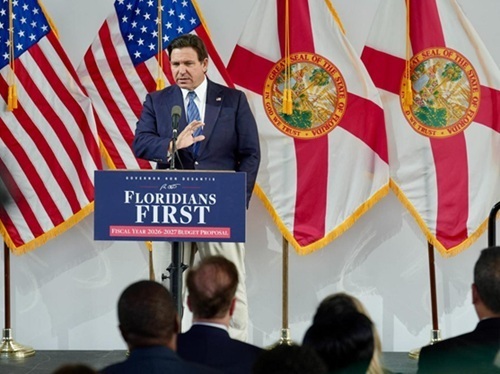The Idaho Transportation Department recently joined the Nez Perce Tribe to celebrate the completion of a new interchange at Aht’Wy Plaza on US Highway 95/US Highway 12 near Lewiston; a roadway project that began in May 2023.
[Above photo by ITD]
The agency said the tribe took the lead on organizing the event, which included Nez Perce drummers from Lighting Creek, a ceremonial demonstration of Nez Perce horsemanship across the overpass, and a prayer from Nez Perce Tribal Executive Committee Chaplain Mary Jane Miles. Idaho Transportation Board Member Gary Osborn, ITD District Engineer Doral Hoff, and ITD Design Construction Engineer Jesse Webb spoke at the event, along with several guests from the tribe and from federal officials.
“This project shows what collaboration and perseverance can accomplish,” Hoff said in a statement. “The single mindedness of all involved to see this through to its fruition goes to show that we had a solid team, and although there were many hurdles, there were none that couldn’t be overcome.”
Many speakers referred to the extensive partnership on the project, which dated back to the 1990s when the tribe first began developing the parcel that now includes the Clearwater River Casino and Lodge, a gas station, and a recreational vehicle park. Other improvements were built before the actual interchange, such as the installation of turn bays and lighting, but motorists continued to experience challenges safely accessing the highway from the plaza.
ITD said its project team finished the interchange design in 2019, opting for the diamond style to avoid environmental concerns that had slowed progress on the design for many years.
Construction was initially made possible in September 2020 by $19 million in federal grant funding but as ITD and the tribe worked to execute the agreement, again the project encountered challenges—this time in the form of rising costs for essential materials.
By April 2022, the tribe and ITD had announced the joint project would be delayed while they applied for additional funding from the Bureau of Indian Affairs Tribal Transportation Bridge Funding program. That gap funding was approved in November 2022, allowing the project to get back on track towards its eventual completion, the agency said.
State departments of transportation around the country are involved in a variety of projects in partnership with Native American tribes.

For example, in early 2023, to help honor and preserve Native American history, the Texas Department of Transportation highlighted the cultural resources it developed to further bolster its relationship with the 28 federally-recognized tribes connected to the Lone Star state by publishing “Texas & Tribes: A Shared Tradition” to tell the stories of those tribes and their role in Texas history and culture.
Also in 2023, one of the newest “next generation” highway rest areas built and maintained by the Iowa Department of Transportation also doubles as a museum of Native American culture.
Traveling northbound on Interstate 29 in western Iowa, the agency’s newest rest area is nestled near the Loess Hills just west of Glenwood and highlights the history of the Native American tribes of that area and how they are connected to what archaeologists call the “Central Plains Tradition.”
Meanwhile, in September 2023, the Wisconsin Department of Transportation highlighted how federal funding is helping the department create a Tribal Technical Assistance Program or TTAP Center for 65 tribal nations across 30 states.
The Traffic Operations and Safety Laboratory or TOPS Lab at the University of Wisconsin-Madison recently received a two-year $625,000 grant from the U.S. Department of Transportation and Wisconsin DOT said it will work with the school to create a TTAP Center to support transportation investments on tribal lands and other tribal initiatives related to training, technical assistance and technology services.
Also, in January 2022, the Colorado Department of Transportation debuted a documentary called “Durango 550: Path of the Ancestral Puebloans” to show how the agency worked with archaeologists and regional Native American tribes to document, study, and ultimately share the discoveries unearthed near Durango in southwest Colorado.
 States
States
NCDOT Staff Participate in ‘Explosive’ Technical Training
December 19, 2025 States
States

